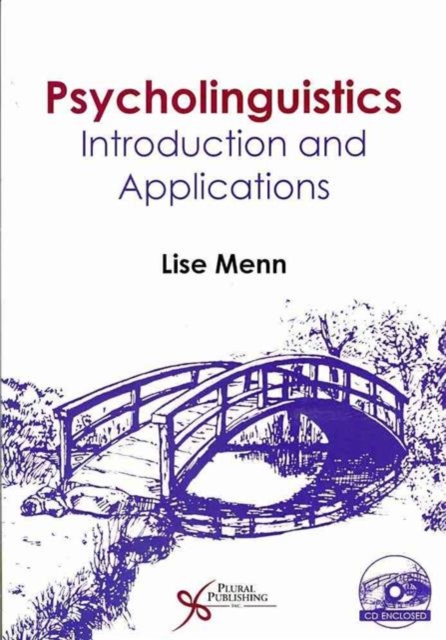
Psycholinguistics : Introduction and Application Mixed media product
by Lise Menn
Mixed media product
Description
For students in speech-language pathology, language education, psychology, linguistics, as well as for working language professionals, this text provides a clear and attractive introduction to current thinking on how our brains process language in speaking, understanding, and reading.
It presents a completely integrated, self-contained account of psycholinguistics and its clinical and pedagogical applications, within a unifying framework of the constant interplay of bottom-up and top-down processing across all language uses and modalities.
References to applications throughout the foundational chapters keep the reader connected to real-world, clinical, and language-teaching applications; this is especially valuable for working professionals who are using the book for self-study and for students in applied fields who need to master and use key concepts from linguistics and psychology. After establishing the basics of language description and normal language processing, the text and its accompanying CD present classical and recent research on first-language development, the differences between learning first and second languages, and the effects of brain damage on the use of language.
The author writes vividly and directly, drawing on her experience as a classroom teacher, interdisciplinary researcher, author, and international lecturer.
Technical terms are clearly explained in context and also in a large reference glossary.
The book opens with a substantial chapter on the aspects of phonetics, phonology, morphology, syntax, semantics, and pragmatics that will be used to describe and understand the errors made by normal speakers, first- and second-language learners and people with acquired language disorders.
The exposition is firmly grounded in examples, including many from languages other than English, and the CD provides additional sound files and links to help with learning the International Phonetic Alphabet. The second chapter introduces the brain as a ceaselessly active, wide-ranging information processor with automatically spreading activation, constantly integrating both bottom-up (sensory) information and top-down (stored) information; the concepts introduced here are used throughout the remainder of the book to explain phenomena as diverse as oral apraxia, overgeneralization, semantic category priming, perseveration, garden-path sentences, proofreader's errors, and failure to generalize training.
The third and fourth chapters develop a classic (Garrett/Levelt/Bock) multi-level speech production model, using normal speech error data to motivate each level, from concept activation to phonetics.
The fifth chapter introduces the basics of experimental design in the context of a carefully selected set of classic and modern psycholinguistic experiments, providing an understanding of sentence memory, priming, the word superiority effect in letter recognition, and the integration of lexical retrieval with sentence production as indicated by eye-tracking. (For readers who do not need an introduction to basic experimental design, a more compact alternative version of the introductory part of this chapter is presented on the CD.) These five core chapters form the foundation for chapters on each of four research areas of applied psycholinguistics: aphasia, first language development, reading, and second language learning.
The final chapter demonstrates how linguistics and psycholinguistics can and should inform classroom and clinical practice in test design and error analysis, while also explaining the care that must be taken in translating theoretically based ideas into such real-world applications.
For all of these topics, the CD provides links to recent publications and relevant Web sites for readers to explore on their own.
Instructors, why adopt this text? Glossary of technical terms that are also clearly explained throughout the text.
Written by a professor with the student curriculum in mind.
CD includes sound files, links to help with learning the International Phonetic Alphabet, and a more compact alternative version of the introductory section.
Clear and attractive layout of clinical and pedagogical applications. Coverage on a range of phenomena, such as oral apraxia, overgeneralization, semantic category priming, perseveration, garden-path sentences, proofreader's errors, and failure to generalize training.
Linguistics, Psycholinguistics, and Language Processes: Interview with Lise Menn, PhD Douglas L.
Beck, AuD, speaks with Dr. Menn about her new book, Psycholinguistics-Introduction and Applications, as well as cognitive processes, top-down compensation for bottom-up sensory deficits, language development, and more. Read the interview here, or view as PD
Information
-
Item not Available
- Format:Mixed media product
- Pages:506 pages, B/W
- Publisher:Plural Publishing Inc
- Publication Date:01/06/2010
- Category:
- ISBN:9781597562836
Information
-
Item not Available
- Format:Mixed media product
- Pages:506 pages, B/W
- Publisher:Plural Publishing Inc
- Publication Date:01/06/2010
- Category:
- ISBN:9781597562836






